Finding the right personal training app is kind of like picking a gym buddy. Some are all talk, some ghost you after week one, and a few actually show up, keep you moving, and help you get somewhere. Whether you’re training for a race, trying to lift heavier, or just looking for someone (or something) to keep you accountable, a good app can make a huge difference. The best ones don’t just throw workouts at you – they adjust, guide, and grow with you. Let’s take a look at the apps that are doing more than just counting reps.
And while workouts get all the spotlight, what you eat plays just as big a role in how you feel and perform. That’s exactly why we built ReciMe – to make the food part easier, smarter, and way less stressful. You can save recipes from anywhere, plan meals that align with your training goals, and get a clean, auto-sorted grocery list in seconds. ReciMe also tracks macros automatically from your saved recipes, so you can stay on top of protein, carbs, and fats without manually entering a thing. Whether you’re bulking, cutting, or just trying to eat better without overthinking it, ReciMe makes nutrition fit right into your fitness routine.

Download for free from the App Store on iPhone and iPad

ReciMe Android App
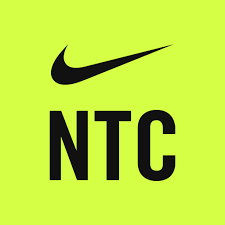
1. Nike Training Club
Nike Training Club blends guided workouts with wellness-focused content, aiming to support users both physically and mentally. The app features on-demand workout videos that range from bodyweight strength training to yoga, cardio, and high-intensity sessions. There’s also a growing selection of mindfulness sessions, breathing exercises, and quick meditations. Users can follow individual workouts or commit to longer programs that span several weeks, depending on their schedule and fitness goals.
Alongside workouts, Nike includes basic tips for rest, recovery, and nutrition. While the app doesn’t include deep tracking features like custom macros or calorie logging, it excels in variety and accessibility. There’s no subscription required, and it’s built to suit beginners, advanced users, and anyone in between. For those using an Apple Watch, the app allows workout control and heart rate tracking directly from the wrist.

Key Highlights:
- Wide mix of workouts including yoga, HIIT, and strength
- Guided meditations and breathing exercises
- Free access to all programs and content
- Support for Apple Watch tracking
- Includes tips for nutrition and recovery
Who it’s best for:
- Users who want structured workout plans without a subscription
- People exploring holistic wellness including mindfulness
- Beginners looking for easy access to home workouts
- Anyone who prefers video-led sessions over detailed tracking
Contact Information:
- Website: www.nike.com
- App Store: apps.apple.com/us/app/nike-training-club-wellness
- Google Play: play.google.com/store/apps/details
- Facebook: www.facebook.com/nike
- Twitter: x.com/nike
- LinkedIn: www.linkedin.com/company/nike
- Instagram: www.instagram.com/nike
- Phone: 1-800-806-6453

2. Fitbod
Fitbod focuses on strength training by using AI to generate personalized workout routines. The app adapts based on user experience, available equipment, and training history. Over time, it adjusts weight recommendations and introduces exercise variety to help users continue progressing. Fitbod supports different styles like push-pull splits, full body, or targeted muscle training. Exercises are demonstrated with video tutorials, and users can build or modify their own routines if they want more control.
The app also connects with platforms like Apple Health, Strava, and Fitbit to streamline progress tracking. Fitbod’s layout prioritizes clarity and customization, offering options to view previous sets, track personal records, and plan around recovery. While the app leans more toward gym-based training, it still includes home workout options. It’s especially useful for those who want a strength-focused fitness routine without having to plan every detail themselves.
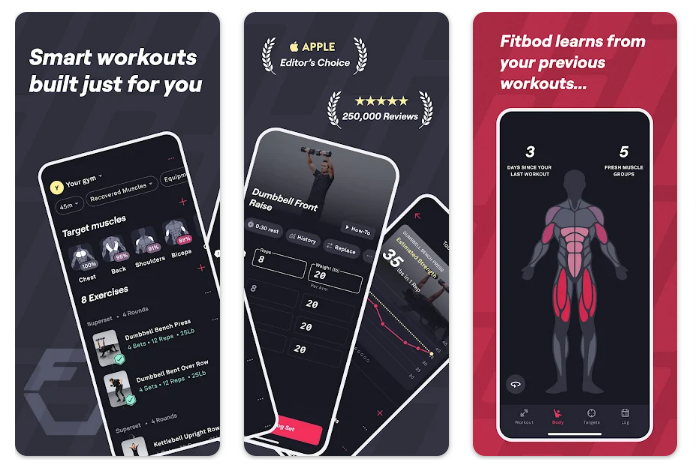
Key Highlights:
- AI-generated strength and endurance routines
- Custom workout planning with multiple exercises
- Tracks weight history and performance progress
- Apple Health and Strava integration
- Supports both gym and home workouts
Who it’s best for:
- People focused on weight training and progression
- Users looking for a personalized gym program
- Beginners unsure how to structure workouts
- Intermediate and advanced lifters seeking tracking and variety
Contact Information:
- Website: fitbod.me
- App Store: apps.apple.com/us/app/fitbod-gym-fitness-planner
- Google Play: play.google.com/store/apps/details
- Facebook: www.facebook.com/groups/fitbod
- Twitter: x.com/FitbodApp
- Instagram: www.instagram.com/fitbodapp

3. ABC Trainerize
ABC Trainerize serves as a flexible coaching platform primarily designed for fitness professionals working with clients. The app allows trainers to create and deliver custom training programs, schedule sessions, provide meal plans, and track client progress in one place. Built-in messaging, client groups, and challenges make it easier for coaches to stay connected and engaged with their clients. Integration with apps and wearables like Apple Health, Fitbit, and Garmin helps pull in additional fitness data such as steps, sleep, and heart rate.
On the client side, the app works as a companion tool for following assigned workouts, logging food, tracking body stats, and chatting with their coach. It supports scheduling reminders, uploading progress photos, and collecting streaks or badges to stay motivated. However, the app is not intended for standalone use and requires a trainer’s invite to function. Some users have pointed out issues with syncing or app responsiveness, especially during workouts, but for those actively working with a coach, it serves as a central hub for communication and tracking.



Key Highlights:
- Custom workout plans with video guidance
- Built-in messaging, scheduling, and habit tracking
- Food logging and nutrition plan support
- Syncs with Apple Health, Fitbit, Garmin, and more
- Works only through an invited trainer-client setup
Who it’s best for:
- Fitness professionals managing multiple clients
- Clients who want structured coaching support
- Users tracking both workouts and meals in one place
- Trainers needing integrated scheduling and messaging tools
Contact Information:
- Website: www.trainerize.com
- App Store: apps.apple.com/us/app/fitness-app-abc-trainerize
- Google Play: play.google.com/store/apps/details
- Facebook: www.facebook.com/trainerize
- Twitter: x.com/trainerize
- LinkedIn: www.linkedin.com/company/trainerize
- Instagram: www.instagram.com/trainerize
- Address: 1250 Homer Street – Suite 305 Vancouver, BC, V6B 1C6, Canada
- Phone: 1 844 625 1155
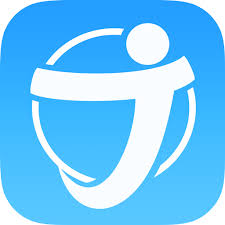
4. JEFIT
JEFIT is a workout tracking app focused on strength training and gym routines. It gives users access to over a thousand exercises with video instructions and supports creating personalized workout plans or downloading pre-built routines from the community. The interface is built around easy logging of sets, reps, and weight, which helps track progress and visualize changes over time. It also syncs across devices and works with Apple Health to log activity automatically.
The app includes daily planning features and offers tools for comparing personal bests and workout stats. There’s also a social aspect where users can share progress and routines within the community. While the layout and language are fairly straightforward, some users mention the interface could feel a bit dated or cluttered depending on the device. Still, for people who want a no-nonsense strength training tracker with room for custom routines, it covers most needs without pushing extra features.
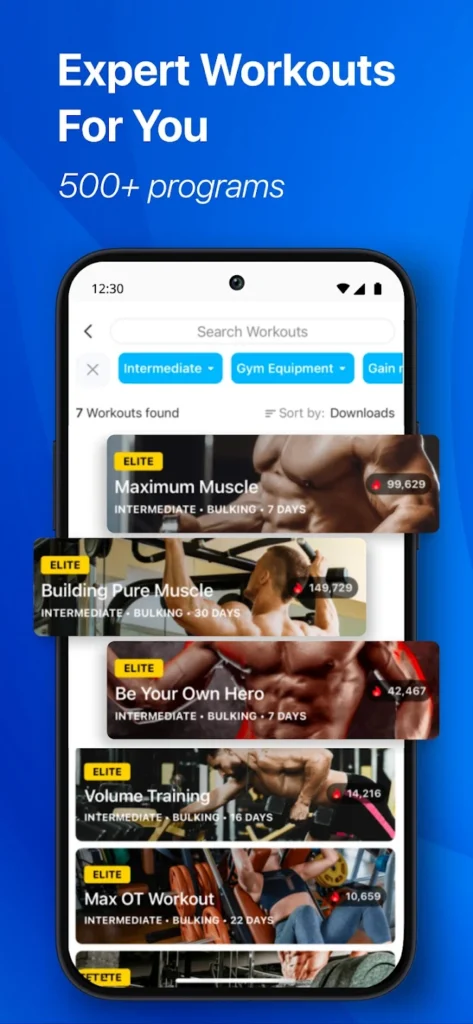
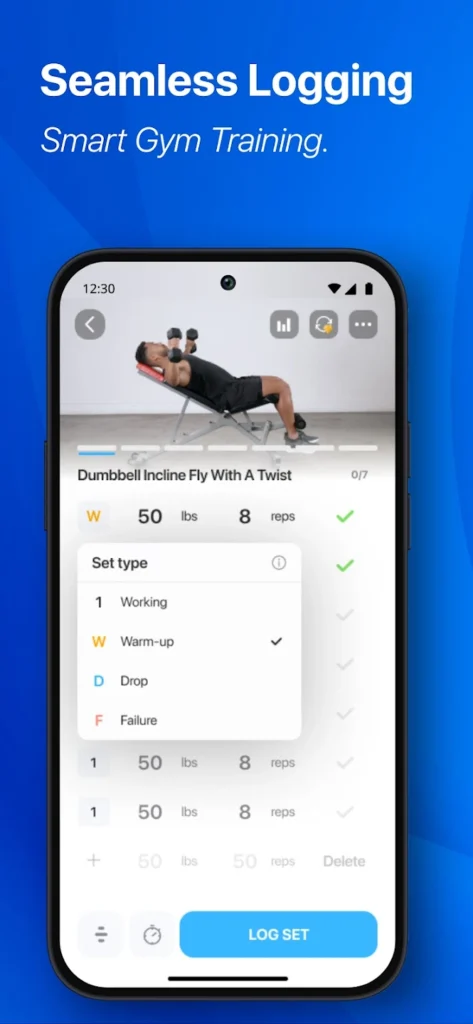
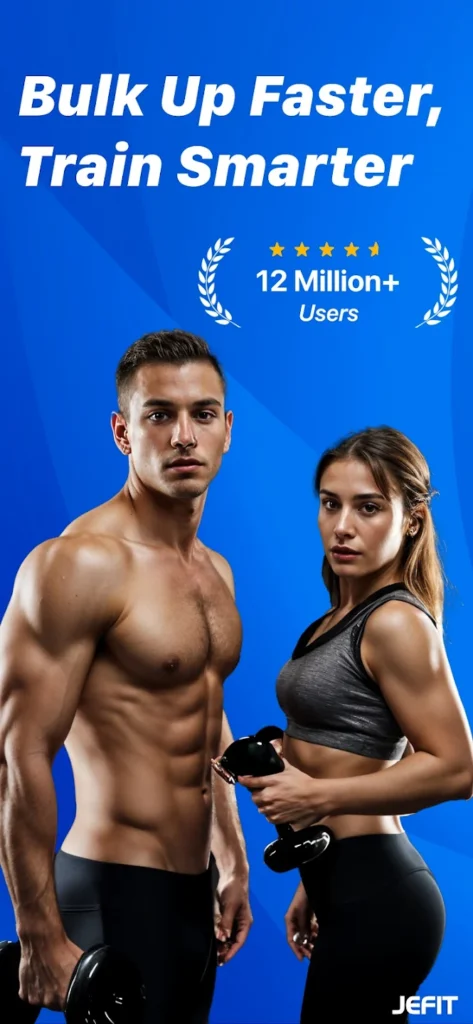
Key Highlights:
- Exercise database with many options and demo videos
- Workout plans for different fitness levels and goals
- Progress tracking with personal best history
- Syncs with Apple Watch and Health app
- Community-created routines and shared logs
Who it’s best for:
- Gym users focused on weightlifting and strength programs
- People who want detailed control over exercise logging
- Users looking to follow or build structured routines
- Anyone interested in tracking long-term progress metrics
Contact Information:
- Website: www.jefit.com
- App Store: apps.apple.com/us/app/jefit-gymbook-workout-tracker
- Google Play: play.google.com/store/apps/details
- E-mail: support@jefit.com
- Facebook: www.facebook.com/jefitapp
- Twitter: x.com/JefitInc
- Instagram: www.instagram.com/jefitapp
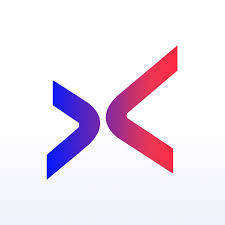
5. Aaptiv
Aaptiv combines audio and video-based workouts with a personalized training system called SmartCoach. The app starts by collecting basic info like goals and ability level, then builds a tailored plan that updates as users progress. It offers over ten thousand workouts covering running, strength training, yoga, and more. While the core experience is audio-led, users can also choose video options for certain workouts. Integration with heart rate monitors adds feedback to help maintain workout intensity.
The app also includes community features, progress tracking, and themed challenges. Users can share their results, join group discussions, and save their favorite sessions. Some reviews mention delays in customer support or issues syncing with Apple Watch, especially for outdoor workouts. Still, Aaptiv suits people who prefer guided coaching over visual-heavy interfaces and want to work out hands-free with trainer instruction and music in their ear.
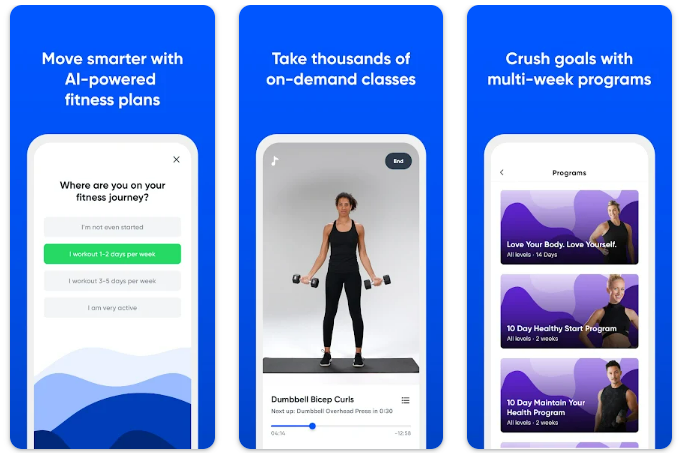
Key Highlights:
- AI-driven SmartCoach for personalized plans
- Large catalog of on-demand audio and video workouts
- Includes heart rate zone training and progress tracking
- Built-in music options or use personal playlists
- Community feed for sharing updates and challenges
Who it’s best for:
- Users who prefer audio-guided workouts over visual ones
- People training for events like 5Ks or strength programs
- Those looking for flexible at-home or on-the-go sessions
- Beginners needing structure without watching a screen
Contact Information:
- Website: aaptiv.com
- App Store: apps.apple.com/us/app/aaptiv-1-audio-fitness-app
- Google Play: play.google.com/store/apps/details
- Facebook: www.facebook.com/Aaptiv
- LinkedIn: www.linkedin.com/company/aaptiv
- Instagram: www.instagram.com/aaptiv

6. Peloton
Peloton offers a mix of live and on-demand fitness classes that users can access from their phone, tablet, TV, or smartwatch. The app includes workouts across several categories such as strength training, yoga, running, cycling, meditation, and stretching. Sessions can be filtered by duration, music type, or focus area, giving users flexibility to fit sessions into their day without needing gym equipment. While the platform originally focused on its bike and treadmill systems, the app works well on its own and covers most types of fitness routines.
In addition to the workouts, Peloton includes tracking features and community elements. Users can follow their stats, join challenges, and keep tabs on past performance using the Apple Watch app. Programs are designed around user schedules and preferences, and the experience is polished across platforms. Some users appreciate the energy from live classes and the ability to stream to a larger screen, while others rely on the pre-recorded library to work out whenever they want.
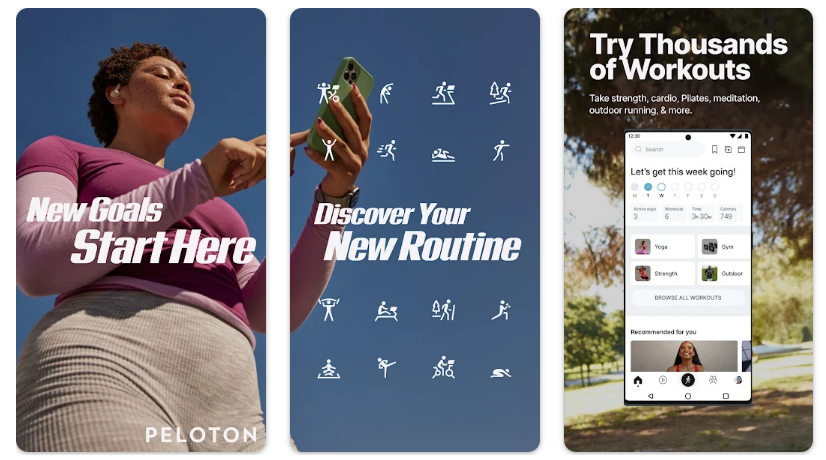
Key Highlights:
- Offers training across categories like strength, cardio, and yoga
- Live and on-demand classes available across devices
- Built-in workout filters and session bookmarking
- Apple Watch integration with real-time metrics
- Option to track outdoor activities and non-guided sessions
Who it’s best for:
- Users who like variety and guided workouts
- People training without gym equipment
- Fans of group-style classes with music
- Anyone looking to build a home fitness routine
Contact Information:
- Website: www.onepeloton.com
- App Store: apps.apple.com/us/app/peloton-fitness-workouts
- Google Play: play.google.com/store/apps/details
- Facebook: www.facebook.com/onepeloton
- Twitter: x.com/onepeloton
- Instagram: www.instagram.com/onepeloton
- Phone: 1-866-679-9129
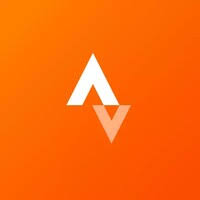
7. Strava
Strava focuses on tracking physical activity while adding a strong social element to the experience. It supports a wide range of workouts, from running and biking to yoga and weight training, all logged within the app. The feed shows what friends are doing, which makes it easier to stay motivated or compare sessions. Location tracking, map routes, and segment analysis are part of the setup, and users can also create or discover new trails based on shared data.
The app works with most smartwatches and wearables and allows syncing from multiple platforms. There’s also a safety feature that shares real-time location with selected contacts during outdoor sessions. Some users have noted occasional inconsistencies between app and web versions, or frustrations when trying to correct recorded activities. Still, for people who care about logging workouts and staying connected to an active community, it offers a practical and straightforward way to do both.

Key Highlights:
- Supports different types of physical activities
- Detailed maps, routes, and segment breakdowns
- Activity feed and challenge features for social motivation
- Syncs with Apple Watch, Garmin, Fitbit, and others
- Includes safety sharing for real-time location
Who it’s best for:
- Runners, cyclists, and outdoor fitness enthusiasts
- People who like competing or comparing data with others
- Users wanting flexible logging across multiple activities
- Anyone looking to build consistency through community challenges
Contact Information:
- Website: www.strava.com
- App Store: apps.apple.com/us/app/strava-run-bike-hike
- Google Play: play.google.com/store/apps/details
- Facebook: www.facebook.com/Strava
- Twitter: x.com/strava
- LinkedIn: www.linkedin.com/company/strava-inc.
- Instagram: www.instagram.com/strava

8. Sworkit
Sworkit offers a flexible approach to fitness by providing routines that adapt to the user’s goals, equipment, and available time. The app includes workouts in categories like strength, HIIT, cardio, stretching, yoga, and even Tai Chi. It’s designed to fit into different lifestyles, with sessions for parents, travelers, and people working out at home. Users can either follow structured six-week plans or build their own custom workouts using the exercise library.
The app also supports a wide range of fitness levels and includes content for kids and recovery routines for pain management. Sworkit doesn’t require any gym equipment, and the bodyweight-focused exercises can be done in limited space. While some advanced features need a subscription, the basic experience covers most essentials for casual users. Integration with other fitness tools like Google Fit and MyFitnessPal adds tracking options, and one-on-one guidance from certified trainers is available through the app.
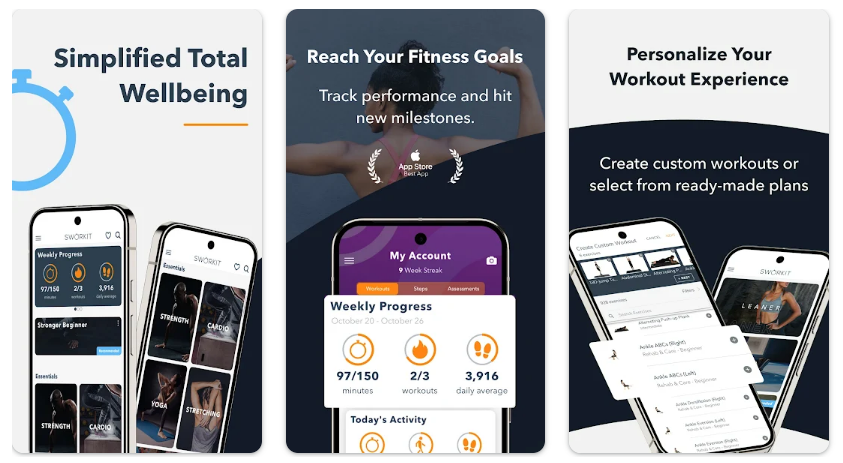
Key Highlights:
- Numerous exercises and workouts for all fitness levels
- Structured plans plus custom workout builder
- Focused routines for flexibility, strength, and recovery
- No equipment required for most sessions
- Syncs with Google Fit and other health apps
Who it’s best for:
- People who want to work out at home without equipment
- Beginners looking for guided, simple routines
- Parents or busy users needing short, flexible sessions
- Users interested in stretching, recovery, and mobility exercises
Contact Information:
- Website: sworkit.com
- App Store: apps.apple.com/us/app/sworkit-fitness-workout-app
- Google Play: play.google.com/store/apps/details
- Facebook: www.facebook.com/sworkit
- Twitter: x.com/sworkit
- LinkedIn: www.linkedin.com/company/sworkit
- Instagram: www.instagram.com/sworkit
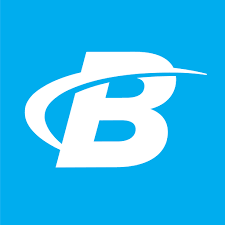
9. Bodybuilding.com Fitness App
The Bodybuilding.com app is designed as a multi-purpose fitness platform that brings together training programs, workout tracking, a community feed, and supplement shopping. Users can follow guided sessions, build their own routines, or explore multi-week programs led by experienced coaches. The app includes a movement library for those who prefer a DIY approach and lets users stack workouts to create personal sequences. Workout metrics such as heart rate and muscle group focus are logged automatically with syncing options for health data.
Beyond training, the app adds a social layer where users can create profiles, connect with others, and share progress. There are also gamified elements like badge collecting tied to workout streaks or milestones. However, a number of users have noted performance issues, such as app crashes or bugs in the workout editor, and expressed frustration over the shift in focus from training functionality to social features. While the supplement store and in-app perks cater to frequent gymgoers, the core app requires a paid subscription for full access.
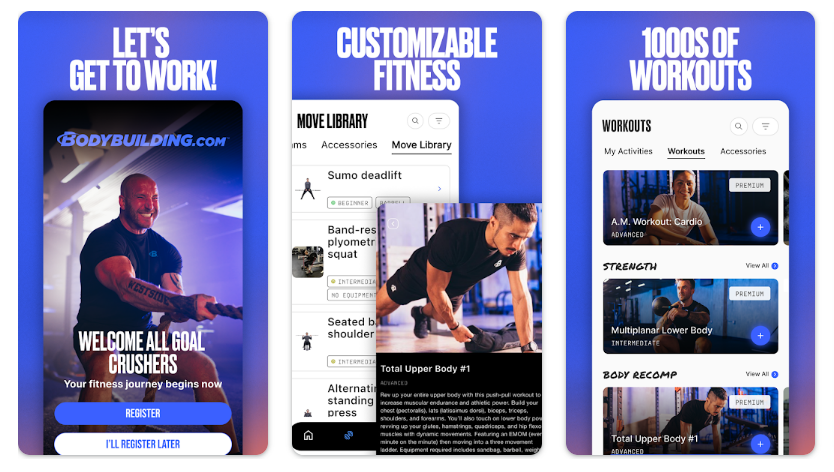
Key Highlights:
- Offers guided workouts, programs, and custom routine building
- Includes movement library and workout stacking feature
- Tracks metrics with Apple Health and Google Health integration
- Community features and private profile options
- Supplement store with exclusive discounts and free shipping for members
Who it’s best for:
- Lifters interested in bodybuilding, strength, or hypertrophy programs
- Users who like combining training plans with social features
- People who want to track training data over time
- Gymgoers looking to integrate supplements and training in one place
Contact Information:
- Website: shop.bodybuilding.com
- App Store: apps.apple.com/ch/app/bodybuilding-com-fitness-app
- Google Play: play.google.com/store/apps/details
- Facebook: www.facebook.com/Bodybuildingcom
- Twitter: x.com/bodybuildingcom
- LinkedIn: www.linkedin.com/company/bodybuilding-com
- Instagram: www.instagram.com/bodybuildingcom
- Address: 9169 West State Street, #510, Boise, Idaho 83714
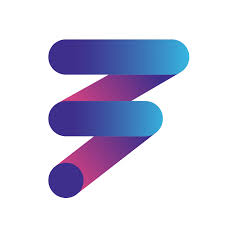
10. FitOn
FitOn is a flexible workout app with a wide range of classes, from yoga and Pilates to HIIT and strength training. Users can access hundreds of video-based workouts, guided meditations, and personalized programs, all designed to be done at home or on the go. The platform features well-known trainers and even includes exclusive sessions with public figures. While most features are free, an optional Pro plan adds things like personalized meal plans, offline access, and music.
The app also supports progress tracking and social interaction, letting users share routines, send messages, and compete on leaderboards. FitOn connects with Apple Health and Apple Watch to monitor heart rate during sessions. Some limitations were noted in areas like recipe quality and the usefulness of the meal section, but the workout variety and ease of use make it accessible to people at different fitness levels. It’s more about daily activity and consistency than complex performance metrics.
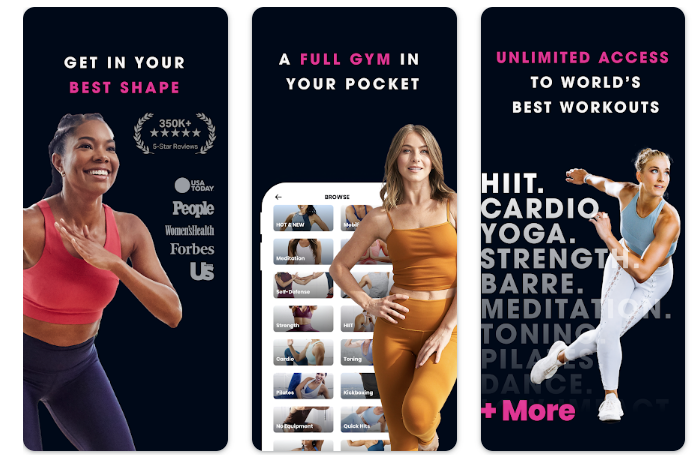
Key Highlights:
- Broad selection of classes including strength, cardio, yoga, and more
- Video workouts with celebrity and professional trainers
- Built-in meditations and stress reduction content
- Social features like messaging, leaderboard, and shared workouts
- Optional Pro plan with recipes, offline access, and music
Who it’s best for:
- People working out at home without equipment
- Users who want variety across workout types
- Those looking for short, flexible workouts
- Anyone who wants both fitness and mindfulness tools in one app
Contact Information:
- Website: fitonapp.com
- App Store: apps.apple.com/us/app/fiton-workouts-fitness-plans
- Google Play: play.google.com/store/apps/details
- Facebook: www.facebook.com/fitonapp
- Instagram: www.instagram.com/fitonapp
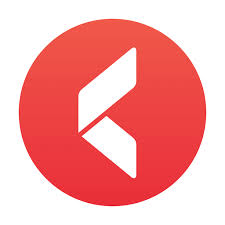
11. Keelo
Keelo focuses on high-intensity functional training that combines strength, conditioning, and cardio in one system. The app offers full-body workouts that scale for different fitness levels and include video demonstrations for each movement. Users can do bodyweight-only routines or incorporate gym equipment like dumbbells or barbells. Keelo tracks performance over time and uses an algorithm to ensure different muscle groups are balanced throughout the week.
Unlike some apps that rely on templates, Keelo uses previous workout history to shape future sessions. There’s also an option to email or chat with a coach for feedback or modifications. The app syncs with Apple Health and supports heart rate tracking during workouts. It doesn’t have much in the way of social features, but focuses instead on structure and progression. For people who prefer focused programming over browsing options, it offers a clear path forward.
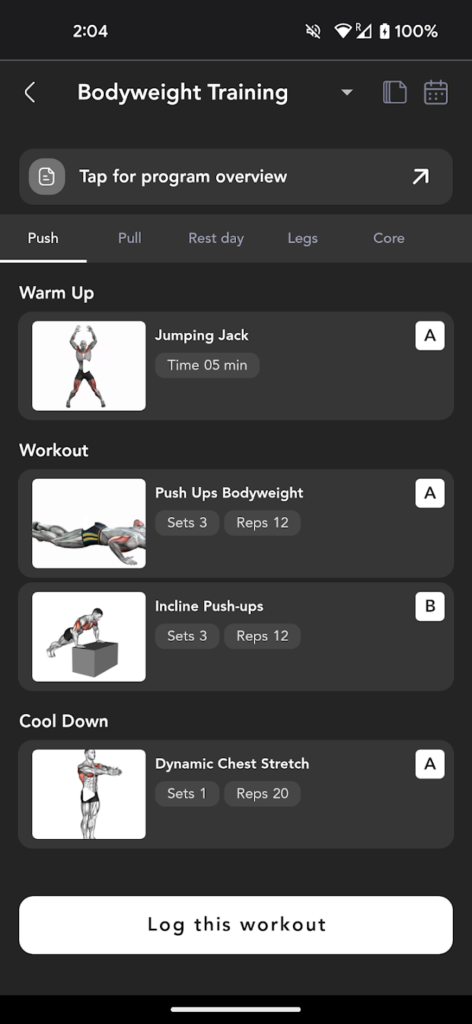
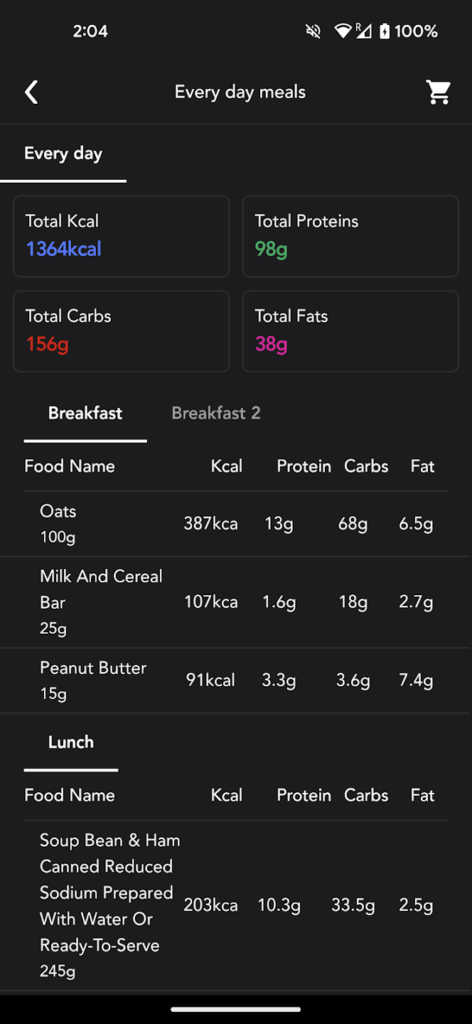
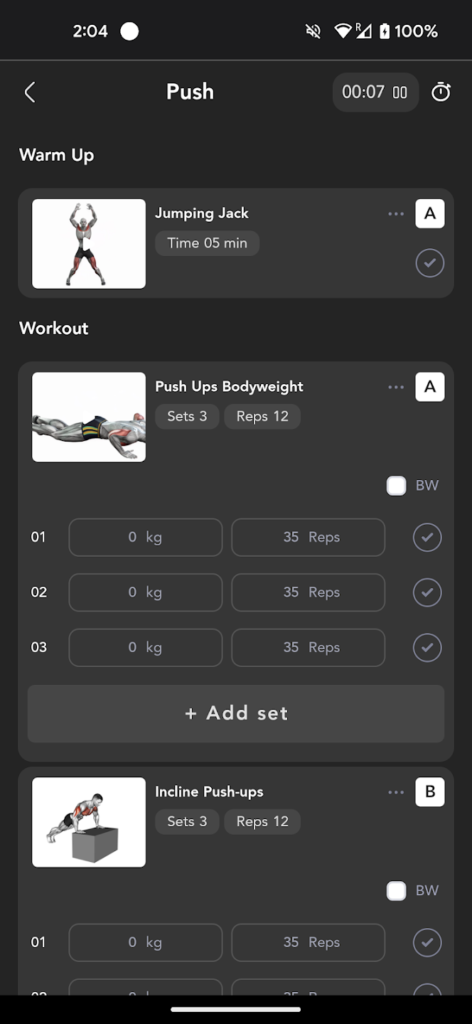
Key Highlights:
- Combines strength, cardio, and conditioning in each session
- Personalized AI-based programming based on workout history
- Video guidance and form tips for every movement
- Equipment options with substitutions for home or travel use
- Email and chat coaching included with premium
Who it’s best for:
- Users looking for structured, high-intensity training
- People who like goal-oriented fitness with tracking
- Those who prefer minimal distraction and focused workouts
- Anyone needing scalable options for home or gym settings
Contact Information:
- Website: keelo.com
- App Store: apps.apple.com/us/app/keelo-strength-hiit-workouts
- E-mail: feedback@keelo.com
- Facebook: www.facebook.com/keelofit
- Twitter: x.com/keelofit
- Instagram: www.instagram.com/keelofit
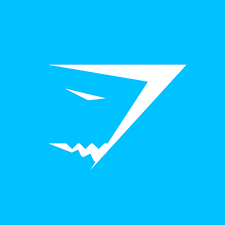
12. Gymshark Training and Fitness
Gymshark’s training app offers a large library of free workouts across multiple training styles, including gym routines, home workouts, stretching, and cardio. Users can sort sessions by type, equipment, muscle group, or difficulty level and save their favorites for later. The app includes guided plans created by trainers and athletes, with new workouts added weekly. It also supports workout tracking, allows users to customize their own routines, and integrates with Apple Health to sync fitness data.
The app encourages consistency with features like Gymshark66, a habit-tracking challenge that promotes building sustainable routines over 66 days. Users can set goals, tick off daily tasks, and resume workouts at any time. The design focuses on accessibility for all levels, from beginners to experienced lifters. Some users have pointed out areas for improvement in stats visibility and progress tracking during sessions, but the app generally keeps things flexible and easy to navigate.
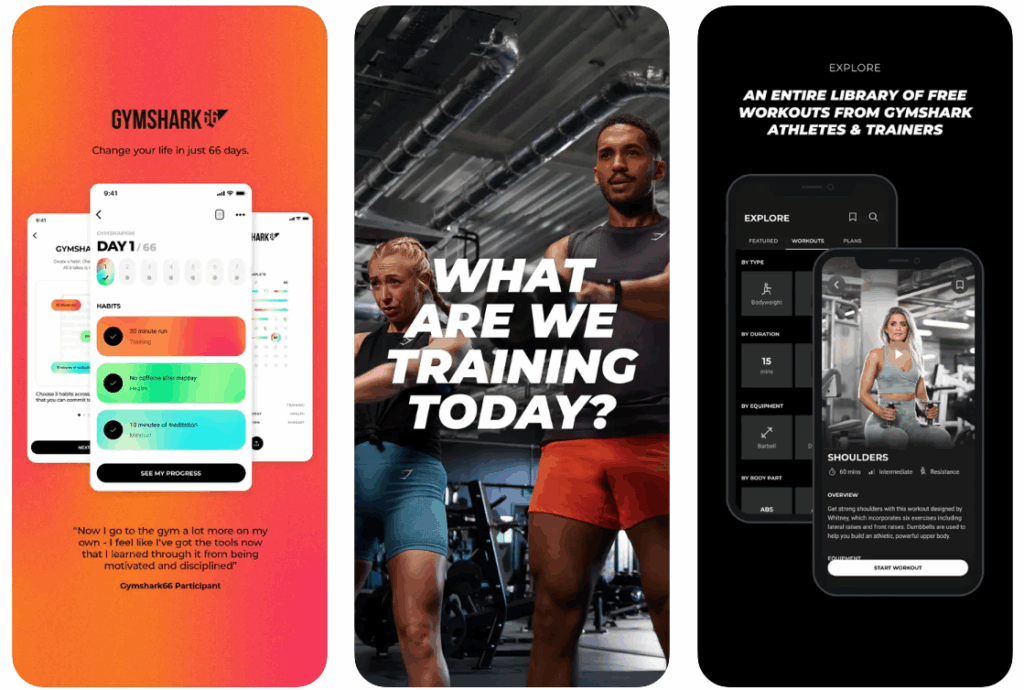
Key Highlights:
- Free access to a wide variety of workouts and training plans
- Includes gym and at-home sessions with minimal equipment options
- Built-in habit challenge feature for long-term consistency
- Custom workout builder and detailed movement library
- Syncs with Apple Health for data tracking
Who it’s best for:
- People looking for a no-cost way to access structured workouts
- Gym-goers and home fitness users seeking variety
- Users who prefer flexibility and self-paced training
- Beginners who want easy-to-follow guidance without pressure
Contact Information:
- Website: www.gymshark.com
- App Store: apps.apple.com/us/app/gymshark-training-and-fitness
- Facebook: www.facebook.com/GymShark
- Twitter: x.com/gymshark
- Instagram: www.instagram.com/gymshark
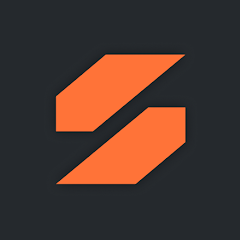
13. SHRED
SHRED delivers personalized workout programs based on user goals, fitness levels, and available equipment. The app includes training plans across multiple categories like hypertrophy, strength, bodyweight, and toning, and adjusts dynamically as users progress. Sessions are guided by trainers and supported by video instruction, timers, and stat tracking. Workout plans can be adjusted at any time to suit changing needs or goals.
The app also offers community-based features like fitness squads, leaderboards, and progress sharing. For users who prefer to train alone, solo options are available. In addition to traditional strength programs, SHRED includes studio-style sessions in areas like HIIT, boxing, and yoga. There’s also integration with Apple Watch for hands-free use and health syncing. While the core app is free, most of the deeper tracking and variety is part of a paid plan.
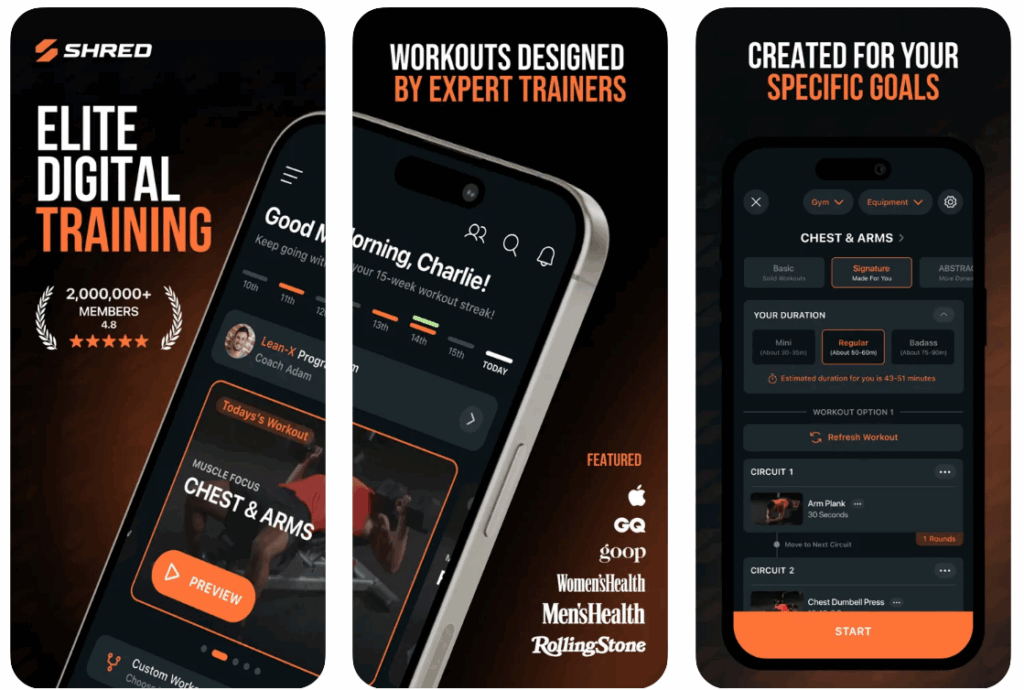
Key Highlights:
- Dynamic training plans personalized for equipment, goal, and level
- Studio classes and traditional strength programs in one app
- Social features for community interaction and motivation
- Tracks stats, consistency, and progress milestones
- Apple Watch integration and health syncing
Who it’s best for:
- People who want structured programs that adapt over time
- Users who like mixing strength work with studio-style classes
- Fitness fans who enjoy friendly competition or community support
- Anyone who prefers app-based planning over in-person trainers
Contact Information:
- Website: www.shred.app
- App Store: apps.apple.com/us/app/shred-gym-home-workouts
- Google Play: play.google.com/store/apps/details
- Facebook: www.facebook.com/shredlabs
- Twitter: x.com/ShredApp
- Instagram: www.instagram.com/shred
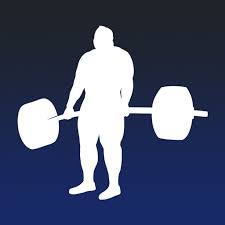
14. JuggernautAI
JuggernautAI is a strength-focused app that builds individualized powerlifting and powerbuilding programs based on user feedback, experience, and readiness. It uses adaptive programming to adjust volume, exercise selection, and periodization strategies in real time, helping users progress based on performance and recovery. The system targets specific lifts like squat, bench, and deadlift, while also allowing for body part focus in powerbuilding tracks.
The app provides users with detailed structure, including weekly adjustments, pre-session warmup guidance, and training frequency recommendations. It’s designed for those who are comfortable lifting on their own and want clear direction without needing to plan from scratch. While it leans heavily on technical progression, it lacks general fitness or casual training options. Users should also be familiar with RPE-based training to get the most out of it.

Key Highlights:
- AI-powered programming tailored for strength and physique development
- Adapts training plans based on user feedback and recovery
- Targets key lifts with strategic accessory work
- Includes exercise guidance and warmup protocols
- Suited for home and gym training environments
Who it’s best for:
- Powerlifters and experienced lifters working toward specific goals
- Athletes who want structure without a coach
- Users familiar with self-guided strength programming
- People training in home gyms who want a focused strength routine
Contact Information:
- Website: www.juggernautai.app
- App Store: apps.apple.com/us/app/juggernautai
- Google Play: play.google.com/store/apps/details
- Facebook: www.facebook.com/JTSstrength
- Instagram: www.instagram.com/juggernauttraining

15. Caliber
Caliber is a fitness app designed around strength training, combining workout programming, progress tracking, and optional coaching. Users can build and track their own workouts or follow structured plans created by trainers. The free version includes access to numerous exercises, detailed tutorials, and a log to track weights, reps, and personal records. Users can also train in private groups and sync their data with Apple Health for cardio and body metrics.
For those who want more structure, Caliber offers two upgrade levels. Caliber Plus adds coach-designed plans, a strength score metric, personalized nutrition targets, and advanced training features. The Premium Coaching tier introduces direct access to a personal trainer with weekly check-ins, fully customized plans, and real-time messaging. Overall, the app provides a clear system for tracking progress and building habits, though some users have reported issues with support responsiveness during trial transitions.
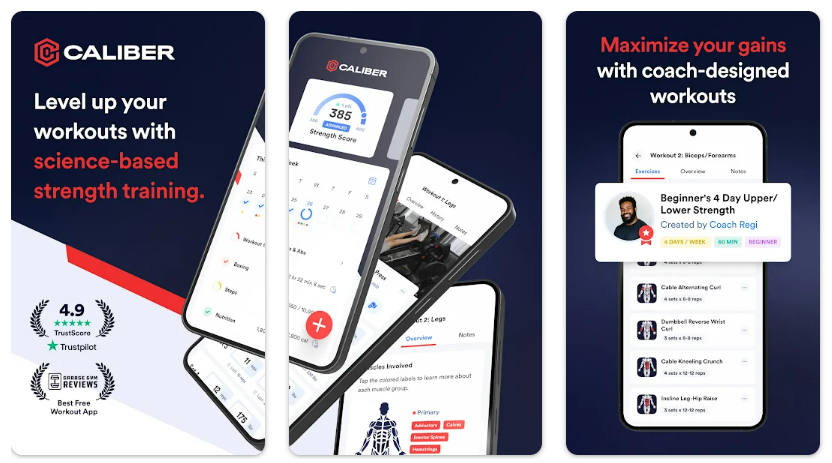
Key Highlights:
- Free workout builder with access to multiple exercises
- Video tutorials and tips for proper form
- Private group training and performance tracking
- Optional upgrades for plans, nutrition targets, and coaching
- Integration with Apple Health
Who it’s best for:
- People focused on strength training or body recomposition
- Users who prefer building custom routines
- Those interested in tracking lifting progress over time
- Individuals who may want access to a coach without in-person sessions
Contact Information:
- Website: caliberstrong.com
- App Store: apps.apple.com/us/app/caliber-strength-training
- Google Play: play.google.com/store/apps/details
- E-mail: support@caliberstrong.com
- Facebook: www.facebook.com/caliberstrong
- Twitter: x.com/caliberstrong
- Instagram: www.instagram.com/caliberstrong
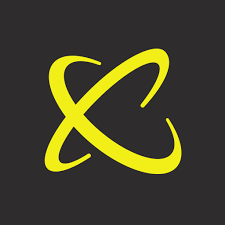
16. Centr
Centr offers a wide range of workouts and wellness tools, combining physical training, meal planning, and daily guidance. The app personalizes fitness routines based on user goals and preferences, with options for both home and gym settings. Workouts span multiple styles including HIIT, yoga, boxing, and strength training. Users can choose coached sessions with vocal guidance or self-guided videos. Centr also includes a structured meal planner based on diet preferences, offering a variety of dishes to match nutrition goals.
The platform caters to different fitness levels and includes specialized programs such as HYROX-certified training. Users can filter workouts by coach, equipment, or focus area and integrate their activity with Apple Health and Apple Watch. While some features require a subscription, the structure of daily workouts and meals aims to reduce decision fatigue. Centr also emphasizes consistency by offering flexible schedules, a diverse team of trainers, and regular content updates.
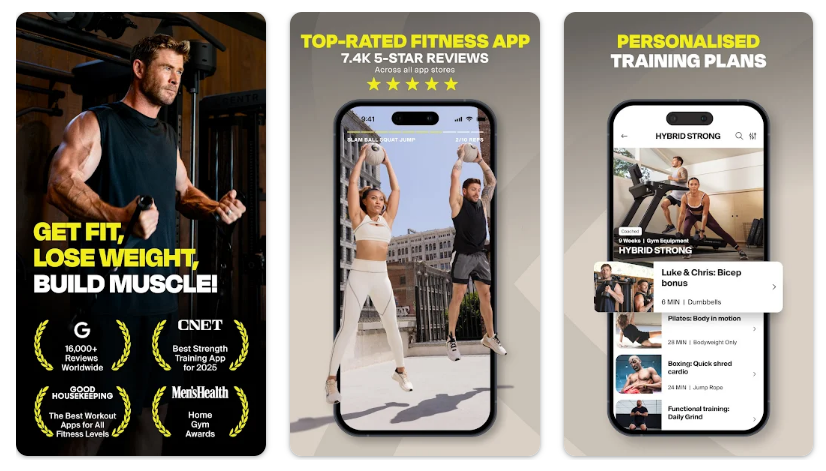
Key Highlights:
- Personalized workouts and meal planning based on goals
- Variety of training styles and session lengths
- HYROX race prep programs included
- Filter workouts by body part, trainer, or equipment
- Sync with Apple Watch and casting support
Who it’s best for:
- Users who want a mix of fitness and nutrition guidance
- People with different training preferences and equipment setups
- Beginners through advanced users seeking personalized planning
- Anyone interested in structured yet flexible routines
Contact Information:
- Website: centr.com
- App Store: apps.apple.com/us/app/centr-personal-fitness-app
- Google Play: play.google.com/store/apps/details
- E-mail: hello@centr.com
- Facebook: www.facebook.com/CentrFit
- LinkedIn: www.linkedin.com/company/centrapp
- Instagram: www.instagram.com/centrfit
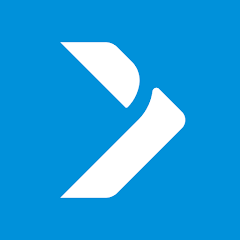
17. iFIT
iFIT delivers interactive, trainer-led fitness experiences through its mobile app, compatible both on and off exercise equipment. Users can access a library of over 10,000 workouts, including cardio, strength, yoga, and bodyweight routines. Sessions are often set in real outdoor locations and guided by trainers who lead multi-week programs. The app also includes an AI-based feature that suggests personalized workouts based on user goals and past activity. It can be used with or without iFIT-enabled machines and supports training at home, in the gym, or outdoors.
Workout metrics such as duration, distance, and intensity are tracked in real time, and users can monitor their progress through the app or synced equipment. For families or multi-user households, the iFIT Pro membership allows individual profiles for up to five users. The app is structured to offer both guidance and flexibility, though some users have noted limitations in playback features and integration with other fitness apps. iFIT supports casual users and long-term training plans alike, with a focus on variety and global trainer content.
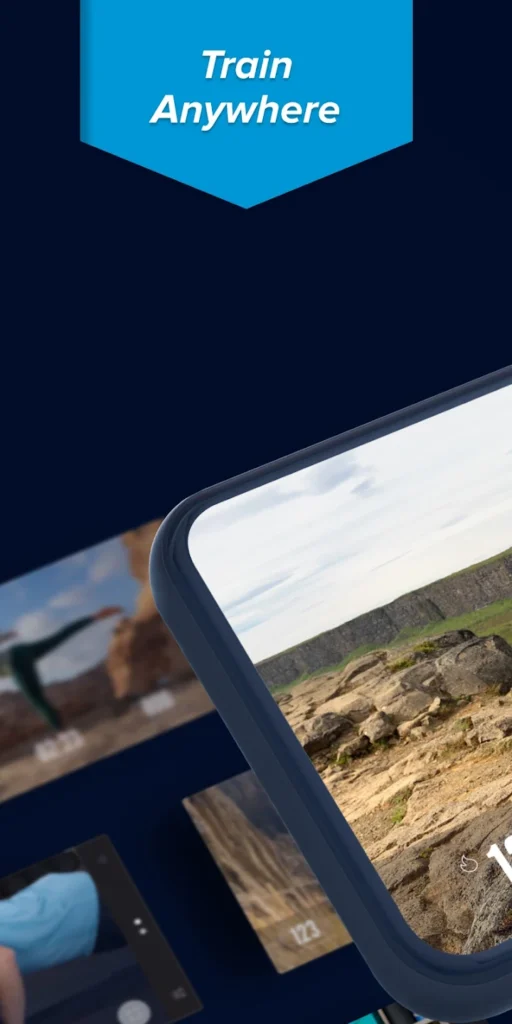
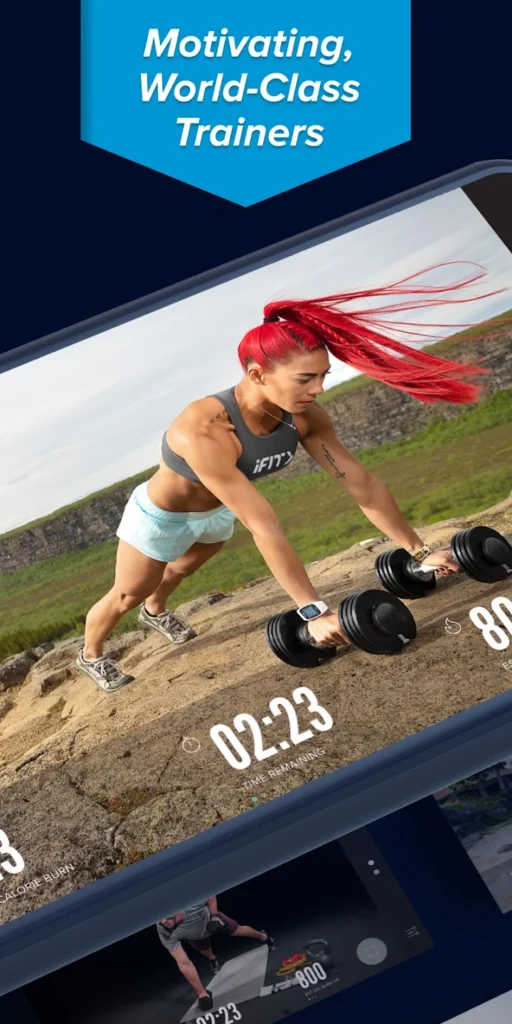
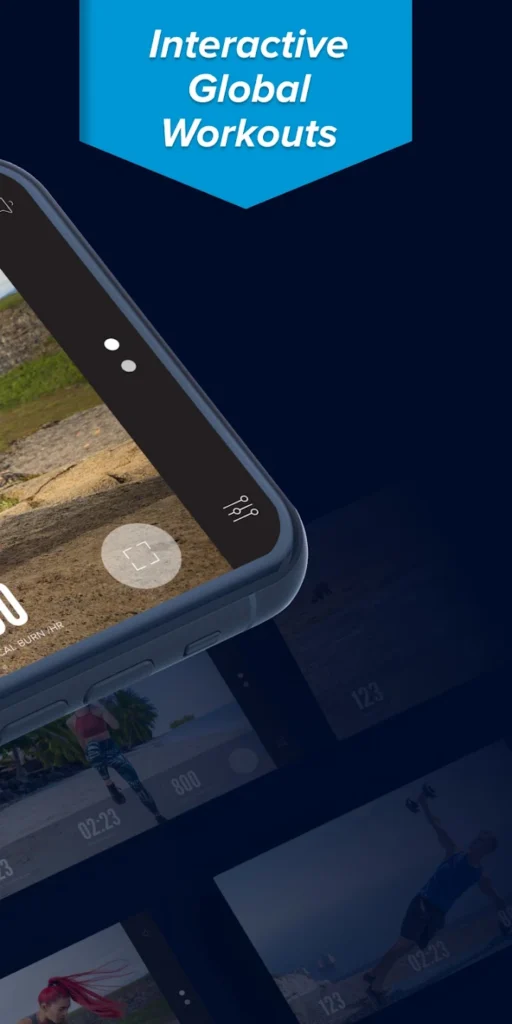
Key Highlights:
- Access to 10,000+ guided workouts
- AI workout suggestions based on personal progress
- Programs for running, cycling, strength, and yoga
- Real-world scenic workout videos
- Available on iFIT machines or as standalone mobile training
Who it’s best for:
- Users with iFIT-compatible equipment at home
- People who enjoy scenic, trainer-led workouts
- Households looking to share a fitness plan across profiles
- Individuals wanting long-term workout structure with progression
Contact Information:
- Website: www.ifit.com
- App Store: apps.apple.com/us/app/ifit-at-home-workout-fitness
- Google Play: play.google.com/store/apps/details
- E-mail: customerservice@iconcanada.ca
- Facebook: www.facebook.com/ifit
- Twitter: x.com/ifit
- Instagram: www.instagram.com/ifit
- Address: 1500 South 1000 West Logan, UT 84321
- Phone: 1-888-308-9620

18. Sweat
Sweat is a personal training app tailored for women and features a variety of workout programs developed by well-known trainers like Kayla Itsines, Kelsey Wells, and others. It offers structured training options that range from HIIT and strength training to yoga and postnatal recovery, with the flexibility to work out at home or in the gym. The app includes both guided programs and on-demand workouts that can be adjusted for different fitness levels, equipment availability, and time constraints. Users can choose to follow set plans or mix and match sessions based on their personal preferences.
Beyond workouts, Sweat also includes tools to support long-term consistency. The app features educational content, meal planning, and daily trackers for steps and hydration. A built-in planner allows users to schedule sessions and track progress, while exercise substitution options make workouts more customizable. Progress can be logged with weights, photos, and notes, and there’s also a social component for sharing updates with other users in the community.
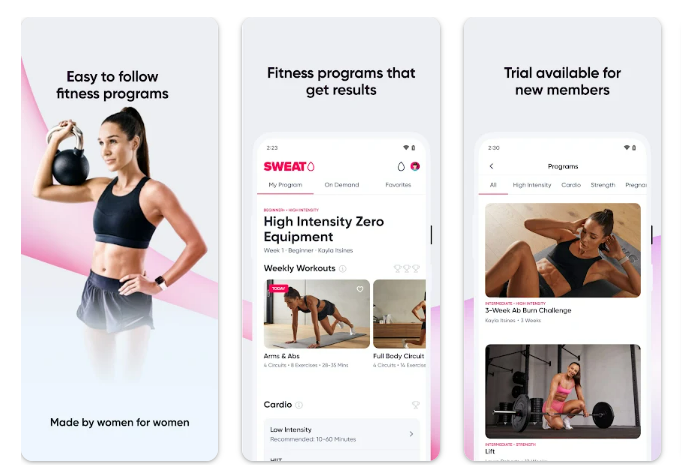
Key Highlights:
- Programs include HIIT, strength, yoga, barre, cardio, and postnatal training
- Option to follow structured plans or work out on demand
- Includes meal plans, hydration and step tracking, and progress logging
- Offers video demonstrations and audio guidance for exercises
- Built-in planner and workout scheduler with customization features
- Active female fitness community for accountability and support
Who it’s best for:
- Women looking for structured or flexible fitness routines
- Users who want a mix of strength and cardio training
- People training at home with minimal or no equipment
- Anyone looking for postnatal or low-impact recovery workouts
- Users who value progress tracking and integrated meal planning
Contact Information:
- Website: sweat.com
- App Store: apps.apple.com/us/app/sweat-fitness-app-for-women
- Google Play: play.google.com/store/apps/details
- Facebook: www.facebook.com/Sweat
- LinkedIn: www.linkedin.com/company/sweatco
- Instagram: www.instagram.com/sweat
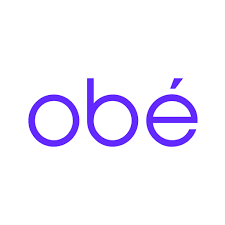
19. obé
obé is a fitness app that combines personalized workout planning with on-demand access to a large catalog of exercise classes. Users can follow curated training programs based on their goals, habits, and preferences, or choose from a library of numerous classes spanning different formats, including dance, boxing, strength, yoga, and more. The app encourages a flexible, consistent routine and gives users the ability to filter sessions by time, intensity, and equipment, making it adaptable to different schedules and fitness levels.
The app includes several features specifically designed for women, such as cycle-syncing recommendations, mood-based class suggestions, and options for prenatal and postnatal workouts. It also offers integration with wearables for tracking health data and progress. Users can work with a personal coach for more support, or join structured challenges to stay engaged. While the platform has shifted focus from live classes to recorded ones, it continues to emphasize accessible fitness, variety, and habit-building.

Key Highlights:
- Personalized training plans based on fitness habits and preferences
- Large on-demand library many workout styles and filtering options
- Features designed for women, including mood-based recommendations and cycle syncing
- Audio-guided and downloadable workouts for on-the-go access
- Optional personal training add-on for one-on-one support
- Integration with wearables and health tracking tools
Who it’s best for:
- Women seeking variety and flexibility in home workouts
- Beginners looking for guided, habit-based fitness plans
- Users interested in short, express workouts and mood-aligned sessions
- People looking for prenatal, postnatal, or low-impact options
- Those who want fitness planning without a strong focus on diet culture
Contact Information:
- Website: obefitness.com
- App Store: apps.apple.com/us/app/obe-fitness-for-women
- Google Play: play.google.com/store/apps/details
- E-mail: vip@obefitness.com
- Facebook: www.facebook.com/groups/ourbodyelectricfam
- Instagram: www.instagram.com/obe_fitness

20. Everfit
Everfit is a platform designed primarily for fitness coaches to manage and support their clients, but it also offers a streamlined experience for trainees. Coaches can use the app to assign workouts, track progress, and communicate directly with users. It supports workout planning, habit coaching, and nutrition guidance, with tools to log body metrics, store photos, and record training notes. While Everfit emphasizes organization for coaches, the client-side interface gives users access to their plans, reminders, and progress history all in one place.
From a user standpoint, the app works well for those training under a coach, with structured programs and clear tracking features. There are some limitations around automation and integrations with other fitness tools, but core features like reminders, synced metrics, and visual workout libraries help with accountability. Users can review past performance, receive updates from their coach, and stay on track with routines built specifically for them.
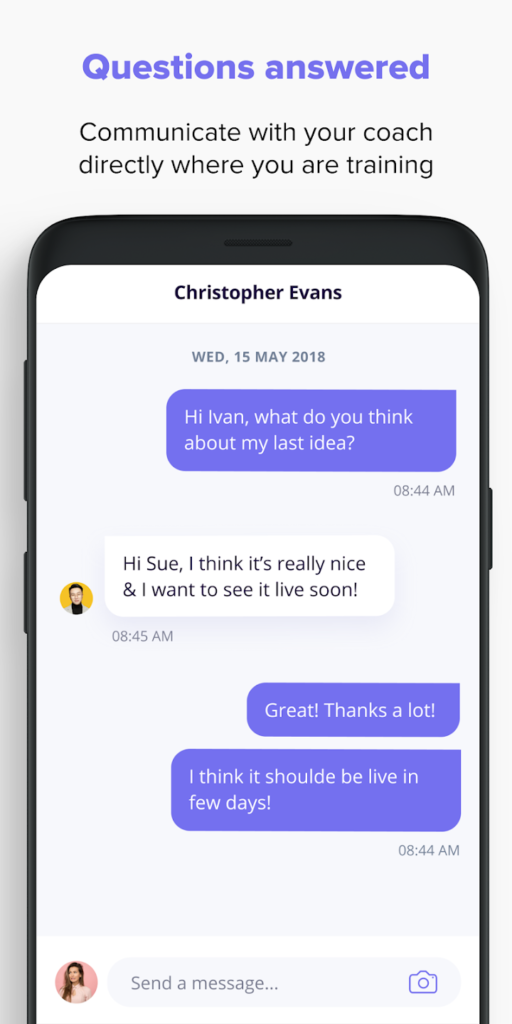
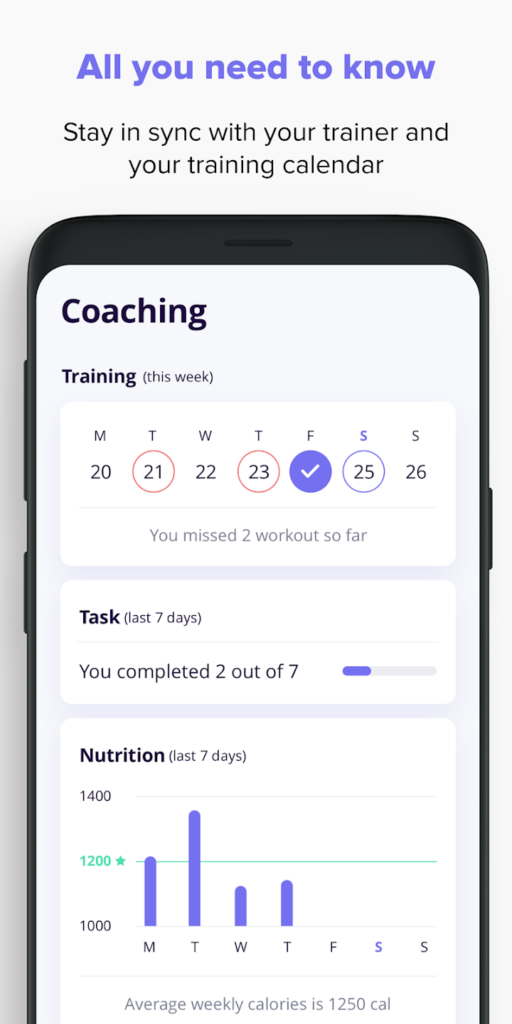
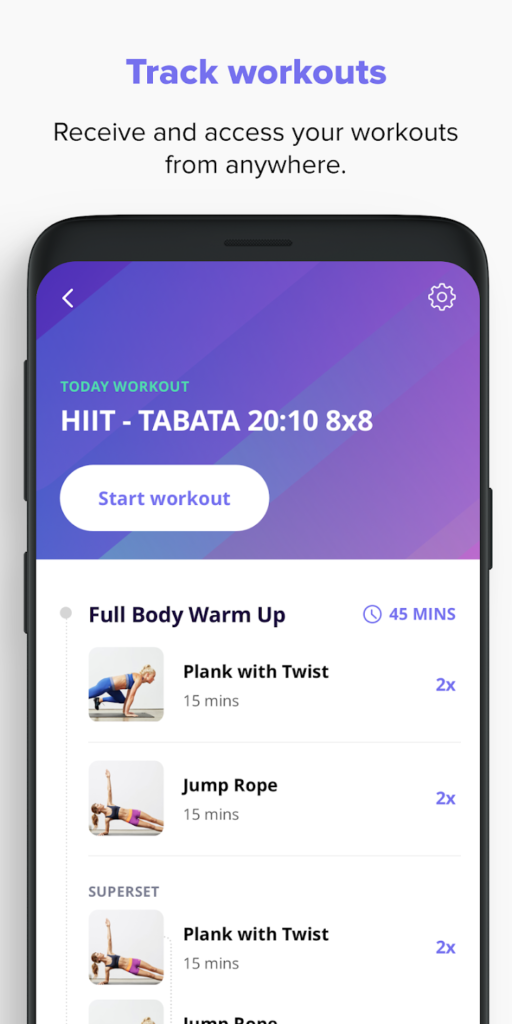
Key Highlights:
- Built for coach-client interaction, with personalized training plans
- Workout and nutrition plans accessible via mobile
- Habit coaching and progress tracking features
- Direct messaging and real-time plan updates
- Syncs with Apple Health for basic metric integration
- Visual exercise demos and notes within assigned workouts
Who it’s best for:
- Clients training under a personal or remote coach
- Users who need structured, coach-led fitness routines
- People looking to track body metrics and visual progress
- Coaches managing multiple clients across different programs
- Trainees who prefer clear logging and habit-based guidance
Contact Information:
- Website: everfit.io
- App Store: apps.apple.com/us/app/everfit-train-smart
- Google Play: play.google.com/store/apps/details
- Facebook: www.facebook.com/everfit.io
- LinkedIn: www.linkedin.com/company/everfit.io
- Instagram: www.instagram.com/everfit.io

21. TrainHeroic
TrainHeroic is a strength-focused workout tracking app used by both individual athletes and coaches. It allows users to build their own training routines, log sets and reps, and monitor progress through performance graphs and personal records. The app includes a large library of exercises with demo videos and coaching notes, which makes it easy to understand movements and plan sessions ahead of time. Users can also connect with coaches for structured programs and feedback if they want more guidance.
While it works well as a standalone tracker, some users report friction with syncing data and formatting on devices like tablets. Features like Readiness Insights and progress graphs help users stay aware of trends over time, but some details around rep tracking or session recall could be smoother. Overall, it’s a solid tool for those focused on lifting, planning, and reviewing strength-based training routines.
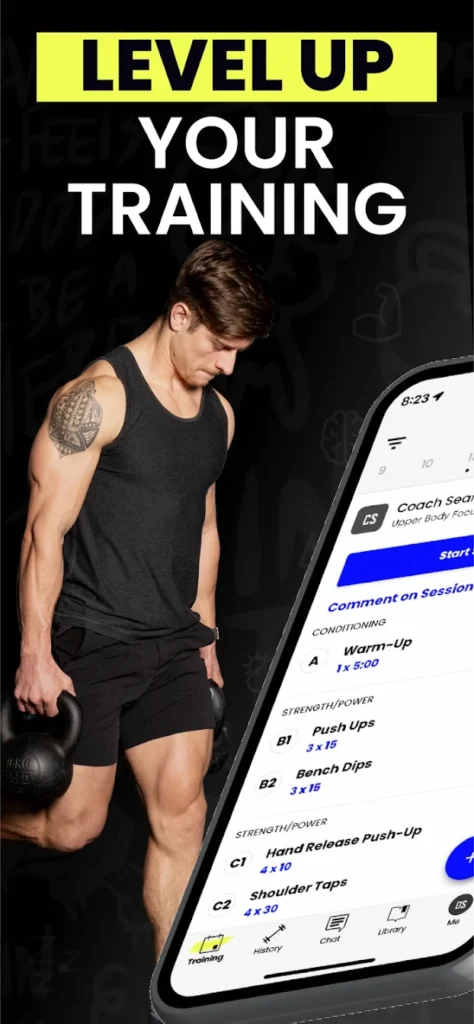
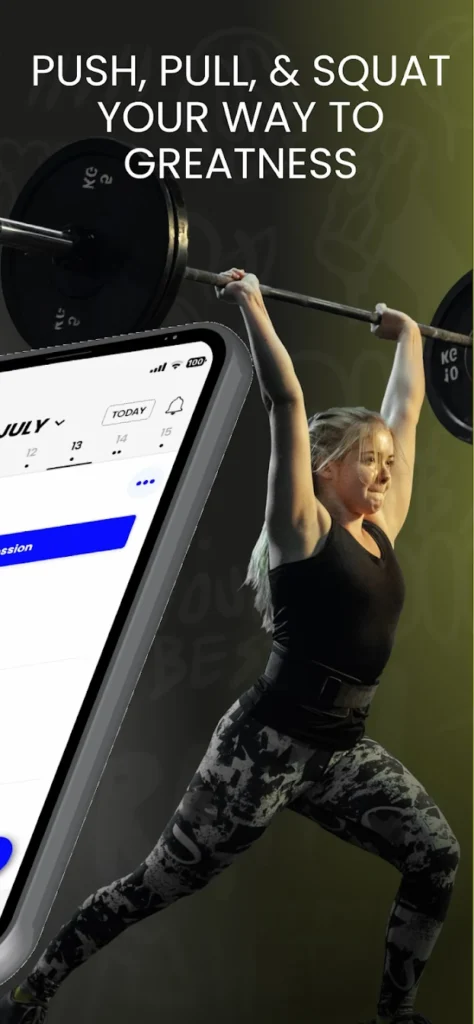
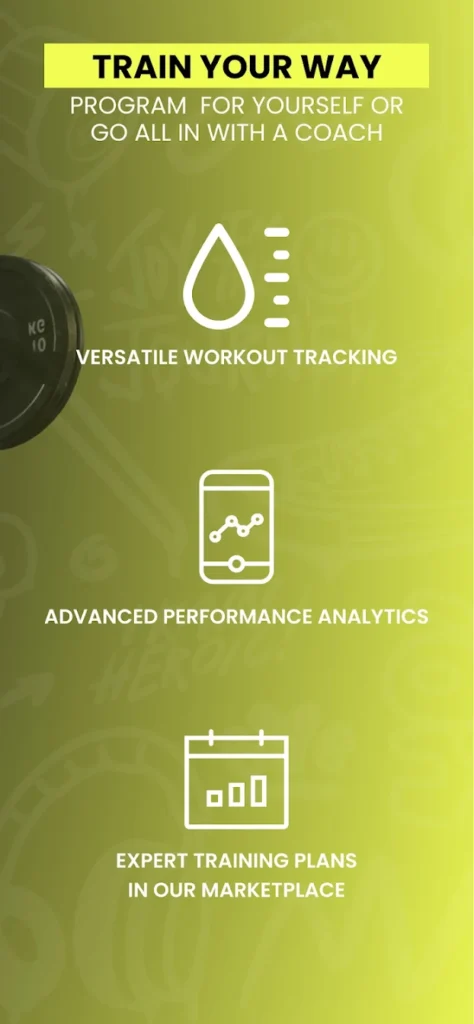
Key Highlights:
- Strength training tools with a large exercise demo library
- Progress tracking with charts, PR logs, and workout history
- Customizable training plans and session calendars
- Connects users with coaches for guided programs
- Built-in timers, calculators, and workout scheduling
- Offers athlete community features like global leaderboards
Who it’s best for:
- Athletes focused on lifting, bodybuilding, or weight training
- Users who want detailed logging and progress tracking
- People who prefer building their own routines
- Trainees working with a coach for programming
- Anyone needing a reliable gym tracker with strength metrics
Contact Information:
- Website: www.trainheroic.com
- App Store: apps.apple.com/us/app/trainheroic-strength-training
- Google Play: play.google.com/store/apps/details
- Facebook: www.facebook.com/trainheroic
- LinkedIn: www.linkedin.com/company/trainheroic
- Instagram: www.instagram.com/trainheroic
Conclusion
At the end of the day, finding the right personal training app really depends on what keeps you moving. Some people need structure and a weekly plan, others just want a big library of workouts they can jump into whenever. And for a lot of us, it’s not just about the exercise itself but how everything else fits around it, like eating right, staying consistent, and not losing motivation three weeks in.
Whatever your setup looks like – home workouts, gym days, guided programs, or mixing it up with a coach – there’s probably an app out there that can help you stay on track without adding more chaos to your routine. Test a few, see what clicks, and don’t be afraid to switch things up when your goals shift. Progress isn’t always linear, but having the right tools can definitely make it a lot less frustrating.
